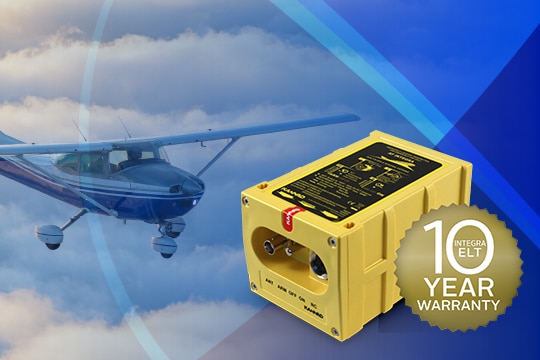406 ELT Mandate in Canada
What You Need to Know About the 406 ELTAn Emergency Location Transmitter is a small device that transmits radio signals to search and rescue teams in case there is a crash or emergency. The signals are used by search and rescue teams to locate the vehicle and rescue the crew. Mandate in Canada
About the 406 ELT Mandate requirements
Transport Canada has recently mandated that all Canadian aircrafts (with notable exclusion of gliders, balloons, airships, ultralights and gyroplanes) will have to be equipped with 406 MHz Emergency Locator Transmitters (ELTs) able to broadcast simultaneously on 121.5 MHz in order to enhance the efficiency of Search & Rescue operations and improve passengers’ safety by increasing the chances for a distress signal to be well and quickly received by Search & Rescue authorities.
All Canadian air operators, private operators and foreign aircraft operating in Canada have until November 25th, 2021 to equip themselves with a compliant ELT applying to this latest requirement. Meanwhile, recreational operators will have until November 25th, 2025 to be properly equipped.
Learn more about latest amendments to the Canadian Aviation Regulations.
The need for a new regulation
As Cospas-Sarsat is no longer monitoring the 121.5 MHz frequency, a distress signal sent out by a downed aircraft carrying only a 121.5 MHz ELT on board might not be detected by Search & Rescue authorities.
This mandate was established to increase the chances of rescue missions’ success for passengers and flight crew operating on all aircrafts in Canada.
Be compliant today by choosing Orolia
The security of our customers being our primary concern, all Orolia beacons have already been designed to broadcast simultaneously on several frequencies to ensure all passengers that a distress signal will be properly sent.
In addition of being 406 MHz compliant, the Kannad Integra ELT benefits from an innovative back-up antenna design, allowing it to offer aircraft operators the highest level of resilience for a distress signal, promptly transmitting the position of a downed aircraft to Cospas-Sarsat satellites, increasing the likelihood of a successful rescue.


